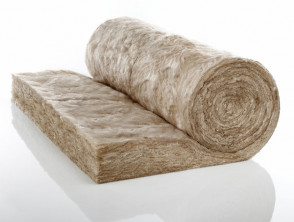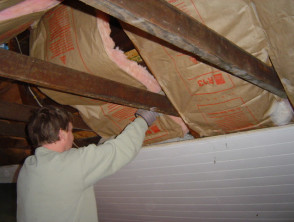Submit your photo of fibreglass dermatitis
What is fibreglass and what is it used for?
Fibreglass (American spelling fiber glass) is a man-made fibrous form of glass produced through a process called pultrusion. Multiple ingredients (including sand) are exposed to high temperatures then inserted through small holes to form glass filaments. Fibreglass itself is a chemically inert substance.
Fibreglass is used in a wide range of industries, as it has excellent thermal, acoustic, and electrical insulation properties. It is also used to reinforce other materials such as plastic.
Fibreglass uses
What is fibreglass dermatitis?
Fibreglass dermatitis is a form of mechanical irritant contact dermatitis due to penetration of the stratum corneum of the skin by small fragments or spicules of fibreglass.
Less frequently, allergic contact dermatitis may develop to the resins that coat the fibreglass fragments.
Fibreglass dermatitis can occur in various occupational settings that involve the creation and use of fibreglass, including:
- Construction industry
- Electronics industry
- Factories producing fibreglass-reinforced plastics
- Production of insulation panels
- Wind energy industry.
Occupational and recreational use of fibreglass
Who gets fibreglass dermatitis?
Fibreglass dermatitis can affect anyone directly exposed to fibreglass, particularly in an occupational setting.
Non-occupational fibreglass dermatitis includes frictional injury from items manufactured using fibreglass, such as hockey sticks and the skin of surfboards.
What are the clinical features of fibreglass dermatitis?
Fibreglass dermatitis is usually an acute presentation. Chronic symptoms of fibreglass dermatitis are rare, as tolerance develops with long-term exposure.
Fibreglass dermatitis affects the exposed areas of the face, neck, forearms, and hands. Flexural surfaces such as antecubital fossae and wrists may be particularly troubled due to increased fibre accumulation, sweat, and friction at these sites. Paronychia is common. High concentrations of airborne fibreglass particles can also cause fibreglass dermatitis which may be associated with sore throat, burning eyes, and cough.
Clinical findings in fibreglass dermatitis may include:
- Papules, vesicles, and excoriations
- Rash may be follicular
- Redness of the affected skin
- Scale, lichenification, and desquamation
- Itching
- Less commonly, ulceration and fissures, and a burning sensation.
Family members sometimes develop fibreglass dermatitis after contact with the worker's clothing.
The degree of mechanical irritation to the skin by fibreglass relates to:
- Type and extent of exposure to fibreglass
- How deeply the fibres have penetrated the skin
- Environmental factors, such as high temperature and humidity
- Diameter of the fibre (thick fibres produce more irritation)
- Length of the fibre (short fibres produce more irritation).
How is fibreglass dermatitis diagnosed?
A detailed clinical history determines the exposure to fibreglass and other risk factors for developing fibreglass dermatitis.
Skin-stripping with microscopy may confirm the diagnosis:
- Adhesive tape is used to repeatedly strip the affected skin
- Potassium hydroxide solution is added to the stripped skin sample to dissolve the skin squames
- Fibreglass fibres are observed on examination of the strippings under polarised light microscopy.
Other investigations may include:
- Skin biopsy — fibreglass fibres are birefringent (have two different refractive indices) under polarised light microscopy
- In vivo reflectance confocal microscopy
- Patch testing to diagnose allergic contact dermatitis to resins (eg, epoxy) used with fibreglass.
What is the differential diagnosis for fibreglass dermatitis?
Fibreglass dermatitis may be misdiagnosed as:
- Other forms of irritant contact dermatitis
- Constitutional forms of dermatitis, such as atopic dermatitis
- Allergic contact dermatitis
- Insect bites and scabies (which can also affect several family members).
What is the treatment for fibreglass dermatitis?
Treatment for symptomatic fibreglass dermatitis may involve:
What is the outcome of fibreglass dermatitis?
The prognosis of fibreglass dermatitis is variable, depending on the presentation and severity. It may self-resolve within a few days if there are only a few particles present in the skin. It tends to recur following re-exposure.
How can fibreglass dermatitis be prevented?
Personal protective equipment and clothing for workers should be used to prevent fibreglass dermatitis. This may include the use of gloves for workers directly handling fibreglass products, and wearing multiple layers of protective clothing. This clothing should be washed separately to minimise the risk of contamination of other items.
Thorough cleaning of occupational environments is required to remove residual fibreglass particles and prevent further exposure.
Barrier creams and emollients have not been shown to be useful in the prevention of fibreglass dermatitis and may make it worse.




